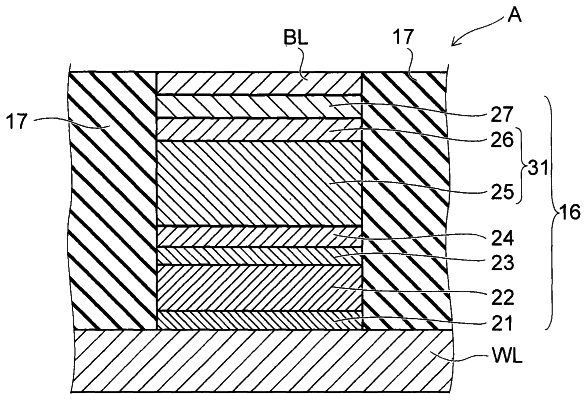| CPC H10N 70/826 (2023.02) [H10N 70/011 (2023.02); H10N 70/24 (2023.02); H10N 70/245 (2023.02); H10N 70/841 (2023.02); H10N 70/8416 (2023.02); H10N 70/8833 (2023.02); H10B 63/84 (2023.02)] | 25 Claims |

|
1. A resistive random access memory device, comprising:
a first interconnection extending in a first direction;
a barrier metal layer of tungsten nitride provided on the first interconnection;
a stacked body layer provided on the barrier metal layer, the stacked body layer comprising
a first material layer including a first material, the first material layer being different from a material of the barrier metal layer, and
a second material layer including a second material which is different from the first material and the material of the barrier metal layer;
a first layer provided directly on the stacked body layer, the first layer including tungsten;
a resistance change layer provided on the first layer and comprising a germanium tellurium antimony;
a second interconnection provided above the resistance change layer and extending in a second direction intersecting the first direction; and
a second layer including tungsten being disposed between the resistance change layer and the second interconnection,
a length of the first interconnection in the first direction being longer than a length of the resistance change layer in the first direction,
a length of the second interconnection in the second direction being longer than a length of the resistance change layer in the second direction, and
the stacked body layer being disposed between the barrier metal layer and the first layer in a third direction, the third direction being orthogonal to the first direction and the second direction,
wherein the first layer completely covers a lower surface of the resistance change layer and the second layer completely covers an upper surface of the resistance change layer.
|